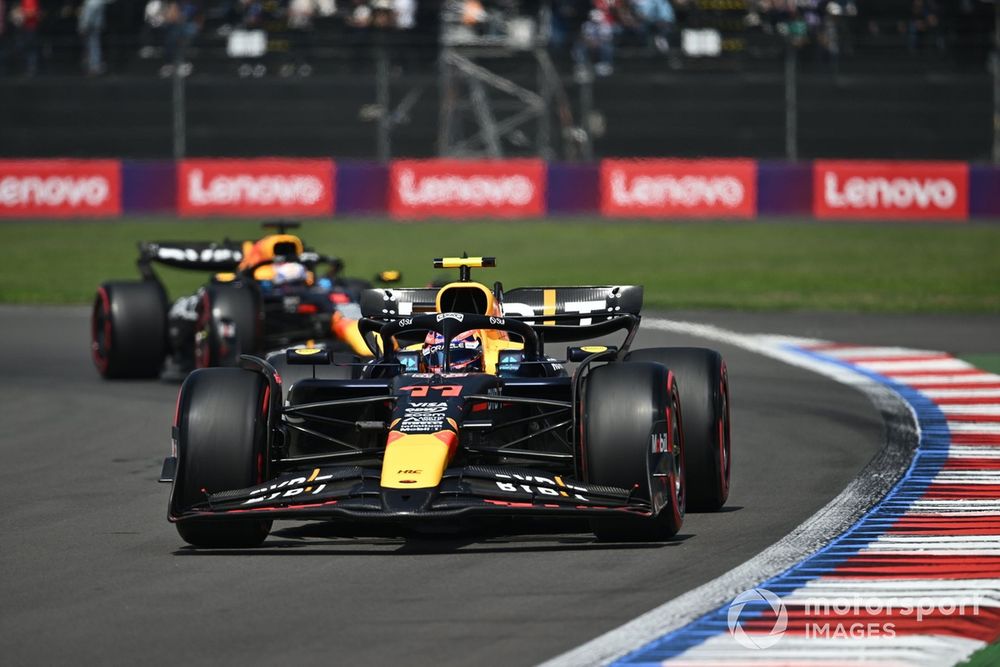The high altitude of Mexico’s Autodromo Hermanos Rodriguez Autodromo has always been an outlier, with the thin air impacting downforce choices as well as the need for extra cooling for the power unit, electronics and brakes.
In this respect, regardless of the high top speeds being encountered, the cars are traditionally set up in their maximum downforce configuration.
Teams normally utilise similar front and rear wing settings and designs to those usually reserved for low-speed circuits, such as Monaco, Hungary and Singapore.
However, that trend was bucked this year, as many of the frontrunners fitted their cars with lower downforce rear wing packages to boost efficiency and straightline speed.

Some teams split packages across cars, with Red Bull, for example, having a different setup across garages. Max Verstappen utilised the lower downforce arrangement, while Sergio Perez used the high downforce set-up.
Beyond the wing choices, teams were also forced to use their maximum cooling configurations, with several having to bring new bodywork that was opened up significantly when compared with other venues.
Five of the 10 teams had update packages at their disposal in Mexico, with all of those featuring some kind of additional cooling support.
The rest of the grid simply re-used the maximum cooling level bodywork that had been used elsewhere this season, rather than support a package that might only make a one-off outing.
The five that did opt for bespoke packages were, Red Bull, McLaren, Ferrari, Williams and RB – all of which had either new, more expansive cooling louvre configurations and/or enlarged rear cooling outlets at the rear of their engine covers.
For both McLaren and Ferrari, the cooling louvres on the side of their engine covers were examples of their pre-existing solutions being taken to extremes, with much larger gills now embossed in the bodywork.

Ferrari SF-24 cooling detail, Mexican GP
Photo by: Giorgio Piola
The SF-24’s solution was not only more expansive in terms of the rear cooling gills, which stretched down over the engine cover’s shoulder section into the sidepod’s upper surface.
The team also decided to mount an additional louvred panel in the forward section of the sidepod’s upper surface too.
Changes were made to this panel during the weekend, with more cooling gills used during FP1/2 (inset), whereas the capacity was actually reduced for qualifying and the race.

Ferrari SF-24 cooling
Photo by: Giorgio Piola
Comparing this to the arrangement used in Monaco, Hungary and Singapore, (left inset, above) we can see how much more of the bodywork has been opened up to improve heat rejection.
This results in the rear cooling outlet remaining the same size, rather than having to be expanded, which might, in turn, have more of an aerodynamic impact at the rear end of the car.
It was a similar story for McLaren, as it too opted for a revised cooling louvre panel, which now stretches down over the engine cover’s shoulder section and reaches across the upper surface of the sidepod (Hungarian and Singapore Grand Prix arrangements inset, below, for comparison).


Meanwhile, of the frontrunners, Red Bull took the opposite approach with its cooling configuration.
The RB20 featured an enlarged rear cooling outlet to help deal with the additional demands posed by the altitude, whilst two louvred panels on either side of the engine cover supplemented this further forward too.



